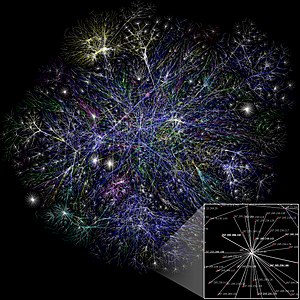Like everyone else who’s awake, my long-time friend and colleague Keri Pearlson and I have been trying to make sense out of the uptake of new "social" technologies into organizations. We are noodling on the hypothesis that the CIO represents the best choice if an organization wants to develop a social technology strategy that is both effective and reasonably efficient in the demands it exacts on the organization.
Saying the Dell or P&G has a social technology strategy is a common shorthand that obscures a more important truth. There are real people in specific roles who take on the responsibility for developing and deploying the collection of initiatives and programs that get labeled as an organization’s social technology strategy. The specific people and the particular functions involved greatly influence the success or failure of these initiatives
Some manager in marketing experiments with Twitter or a fan page on Facebook. A lawyer in the general counsel’s office raises a concern about whether an employee comment on Twitter creates a liability for the corporation. A divisional general who still has his assistant print out his email traffic creates a task force to develop a corporate social media policy proposal. While there may be no right answer for how an organization handles social media, these choices matter. The hypothesis that we are considering is this:
The CIO represents an excellent choice for who should coordinate an organization’s approach to social media/social networking.
Why we think this is a reasonable hypothesis
From an IT manager’s perspective, the technologies of social media/social networking appear quite simple. They are either web services hosted outside the firewall or they are very simple new capabilities hosted on internal servers. Compared with the complexities of a global ERP system, a distributed point-of-sale system, or a terabyte-scale data warehouse, social media/social networking capabilities are technologically trivial. Why then are they a problem relevant to the IT function? Why not simply let ownership and management of these capabilities reside in the business?
First, much of the value in social media/social networking lies in the masses of data they generate. Whether in the content of employees at Microsoft blogging internally or publicly about their work or in the network linkage data embedded in the interactions among customers and customer service staff using @ComcastCares on Twitter, there are masses of data to be managed and manipulated. IT knows and understands the issues that arise when dealing with data on this scale. Moreover, they understand how to filter through and extract insight from this data.
Second, there is huge potential value in connecting activity in social networking venues to specific business process steps embedded in the current enterprise support environment. This too constitutes an area where IT’s existing perspectives add value as social media/networking activity moves from experiment to operating at scale.
Third, many of the issues with social media/social networking cross functional boundaries in the organization. IT as a group routinely handles cross-functional issues in designing and deploying other technology around the organization. They will have established relationships with the right people around the organization and they will be sensitive to the kinds of organizational issues that arise in cross-functional undertakings.
The general point is that experiments with these technologies will occur naturally in multiple spots throughout the organization. As these experiments grow in scale and scope the particular management challenges that will appear fall squarely in the sweet spot of the IT function.
What we’re doing next
Organizational work is messy and complex. Social technologies are messy and complex. Put the two together and you have mess squared.
What that means is that there aren’t any maps and there aren’t any checklists. There is no cookbook or operating manual to follow. Not yet, at any rate.
The appropriate research strategy now is to capture and start to understand the messy stories of what is actually going on. It is too soon to strip the story down to its essentials, because we can’t yet differentiate critical step from colorful detail.
We are looking to develop case studies of what organizations are actually doing. At this point, it is premature to be distilling these stories into a coherent and over simplified narrative. For now, it is enough to get multiple stories of successful, failed, and too soon to tell efforts. Comparing and contrasting those stories will begin to reveal the patterns of what matters. if you’re interested, drop one of us a line or leave us a comment.

![Reblog this post [with Zemanta]](http://img.zemanta.com/reblog_e.png?x-id=a8c33c3f-fafc-40cd-b6a9-e207ba66818c)

![Reblog this post [with Zemanta]](http://img.zemanta.com/reblog_e.png?x-id=7690ab24-71e1-45e4-a22b-30595ed8e0fc)

![Reblog this post [with Zemanta]](http://img.zemanta.com/reblog_e.png?x-id=a48bd95e-7bb5-42f6-9558-0608beff7e1e)

![Reblog this post [with Zemanta]](http://img.zemanta.com/reblog_e.png?x-id=fa95fed3-b669-4288-bb82-f002c96fa719)